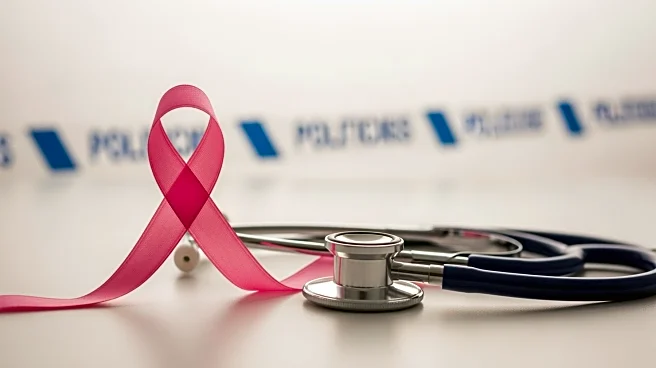What's Happening?
Dr. Jeremy London, a cardiovascular surgeon, has identified several subtle symptoms of heart attacks that are frequently missed, particularly in women and older adults. These symptoms include shortness
of breath, pressure in the jaw, neck, or upper back, fatigue, and dizziness. Unlike the typical chest pain associated with heart attacks, these signs can be easily mistaken for other conditions such as asthma or anxiety, leading to delayed treatment. Dr. London emphasizes the importance of recognizing these atypical symptoms to improve detection and survival rates. He advises individuals to pay attention to their body's warnings and seek medical help if they experience these symptoms, especially if they have risk factors like high blood pressure, diabetes, or a smoking habit.
Why It's Important?
The recognition of these subtle symptoms is crucial as they can lead to more dangerous outcomes than the typical chest pain symptoms. Delayed treatment due to misinterpretation of these signs increases the risk of heart injury or death. By understanding and identifying these symptoms early, individuals can seek prompt medical attention, which can prevent complications and improve survival rates. This information is particularly vital for women and older adults who may not exhibit typical heart attack symptoms, thus ensuring they receive timely and appropriate care.
What's Next?
Dr. London advises regular health screenings and monitoring of vitals and blood sugar levels, even for individuals without a history of heart disease. This proactive approach can help in early detection and prevention of heart attacks. Additionally, raising awareness about these subtle symptoms among the general public and healthcare providers can lead to better diagnosis and treatment strategies, ultimately reducing heart attack-related fatalities.
Beyond the Headlines
The emphasis on atypical heart attack symptoms highlights the need for a broader understanding of cardiovascular health beyond traditional indicators. This could lead to changes in public health messaging and medical training, ensuring that healthcare professionals are equipped to recognize and treat these less obvious signs effectively.











